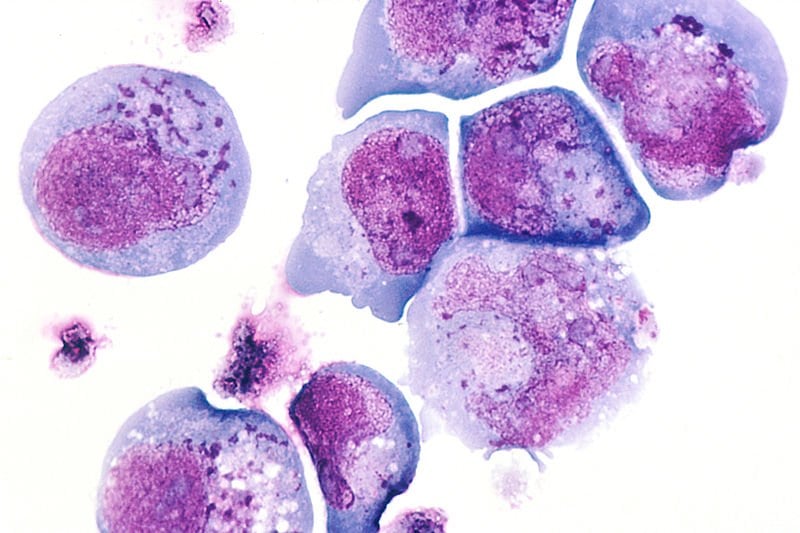Many experts believe that chronic fatigue syndrome (CFS) has several root causes including some viruses. Now, lead scientists Shara Pantry, Maria Medveczky and Peter Medveczky of the University of South Florida’s Morsani College of Medicine, along with the help of several collaborating scientists and clinicians, have published an article in the Journal of Medical Virology suggesting that a common virus, Human Herpesvirus 6 (HHV-6), is the possible cause of some CFS cases.
Over 95 percent of the population is infected with HHV-6 by age 3, but in those with normal immune systems the virus remains inactive. HHV-6 causes fever and rash (or roseola) in infants during early childhood, and is spread by saliva. In immunocompromised patients, it can reactivate to cause neurological dysfunction, encephalitis, pneumonia and organ failure.
“The good news reported in our study is that antiviral drugs improve the severe neurological symptoms, including chronic pain and long-term fatigue, suffered by a certain group of patients with CFS,” said Medveczky, who is a professor of molecular medicine at USF Health and the study’s principal investigator. “An estimated 15,000 to 20,000 patients with this CFS-like disease in the United States alone may ultimately benefit from the application of this research including antiviral drug therapy.”

The link between HHV-6 infection and CFS is quite complex. After the first encounter, or “primary infection,” all nine known human herpesviruses become silent, or “latent,” but may reactivate and cause diseases upon immunosuppression or during aging. A previous study from the Medveczky laboratory showed that HHV-6 is unique among human herpesviruses; during latency, its DNA integrates into the structures at the end of chromosomes known as telomeres.
Furthermore, this integrated HHV-6 genome can be inherited from parent to child, a condition commonly referred to as “chromosomally integrated HHV-6,” or CIHHV-6. By contrast, the “latent” genome of all other human herpesviruses converts to a circular form in the nucleus of the cell, not integrated into the chromosomes, and not inheritable by future generations.
Most studies suggest that around 0.8 percent of the U.S. and U.K. population is CIHHV6 positive, thus carrying a copy of HHV-6 in each cell. While most CIHHV-6 individuals appear healthy, they may be less able to defend themselves against other strains of HHV-6 that they might encounter. Medveczky reports that some of these individuals suffer from a CFS-like illness. In a cohort of CFS patients with serious neurological symptoms, the researchers found that the prevalence of CIHHV-6 was over 2 percent, or more than twice the level found in the general public. In light of this finding, the authors of the study suggest naming this sub-category of CFS “Inherited Human Herpesvirus 6 Syndrome,” or IHS.
Medveczky’s team discovered that untreated CIHHV-6 patients with CFS showed signs that the HHV-6 virus was actively replicating: determined by the presence of HHV-6 messenger RNA (mRNA), a substance produced only when the virus is active. The team followed these patients during treatment, and discovered that the HHV-6 mRNA disappeared by the sixth week of antiviral therapy with valganciclovir, a drug used to treat closely related cytomegalovirus (HHV-5). Of note, the group also found that short-term treatment regimens, even up to three weeks, had little or no impact on the HHV-6 mRNA level.
The investigators assumed that the integrated virus had become reactivated in these patients; however, to their surprise, they found that these IHS patients were infected by a second unrelated strain of HHV-6.
The USF-led study was supported by the HHV-6 Foundation and the National Institutes of Health.
Further studies are needed to confirm that immune dysregulation, along with subsequent chronic persistence of the HHV-6 virus, is the root cause of the IHS patients’ clinical symptoms, the researchers report.
Notes about this CFS and virology research
Contact: Anne Delotto Baier – USF Health
Source: USF Health press release
Image Source: The histological slide of HHV-6 is credited to Zaki Salahuddin, Laboratory of Tumor Cell Biology and is in the public domain.
Original Research: Abstract for “Persistent human herpesvirus-6 infection in patients with an inherited form of the virus” by Shara N. Pantry, Maria M. Medveczky, Jesse H. Arbuckle, Janos Luka,Jose G. Montoya, Jianhong Hu, Rolf Renne, Daniel Peterson, Joshua C. Pritchett, Dharam V. Ablashi, and Peter G. Medveczky in Journal of Medical Virology. Published online July 25 2013 DOI: 10.1002/jmv.23685






